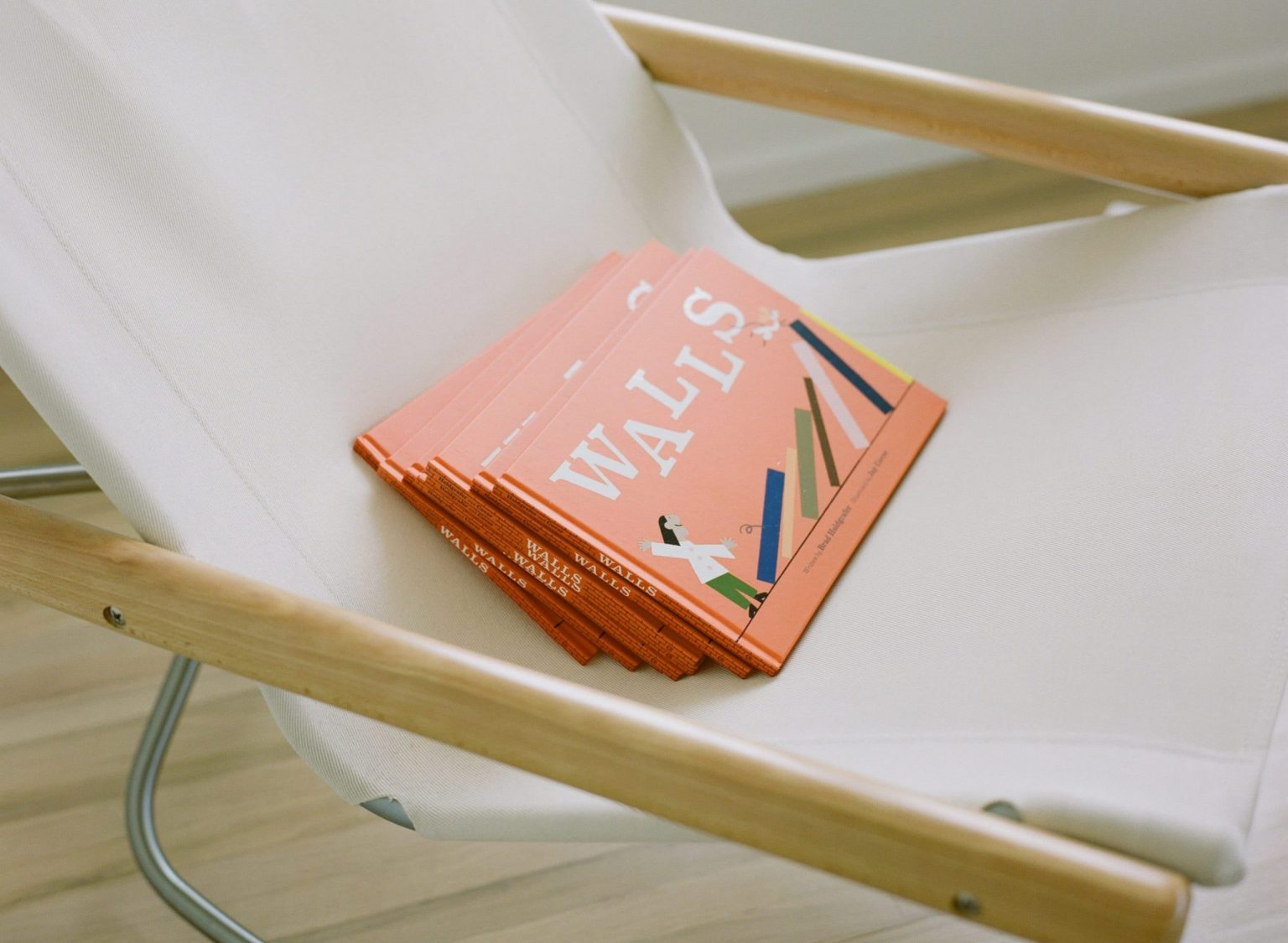Challenging topics are often left to the adults in most instances. But there’s value in introducing complex and nuanced topics in hopes of helping children develop an understanding around things they will inevitably face down the line. For Brad Holdgrafer, the increasingly divisive nature of the United States reinforced during the 2016 Republican National Convention spurred him to pursue something he hadn’t ever done before, write a children’s book. While Holdgrafer’s background is in retail and design, writing this book was a way to encapsulate his feelings and desires to push the dialog towards the tangible and metaphorical meanings of a “wall.” Donald Trump’s own overly simplistic solution of building US-Mexico wall has been met with obvious ridicule, but it has rarely been dissected as a reflection of why it seems like it’s a good idea. Walls aims to bring a level of understanding behind a particular set of solutions and holding ideas conceptually accountable.
Naturally, a children’s book cannot work without captivating imagery. Holdgrafer’s critical eye, that once manifested itself physically with the Downtown Los Angeles boutique Formerly Yes, led him to the work of British illustrator Jay Cover, one third of the visual art collective Nous Vous. An impassioned cold call led Jay to come on board and offer his unique style to round out Walls. While the catalyst began with Holdgrafer, Walls has come to represent a series of happy surprises and a partnership in the truest collaborative sense. For Cover himself, he witnessed similar parallels brought forth from Brexit.
It’s been over two years since the original Walls was conceived and had it not been for Princeton Architectural Press noticing a post on Cover’s Instagram, Walls may have continued to rest unseen to the public eye. Walls was officially released on the 21st of August. Regardless of whether or not you identify with Walls from a philosophical level, Walls has come to represent a collective interest to open up the conversation and introduce a vector for all people, of all ages.
You can purchase Walls on Amazon.

Typographic sketch by Jay Cover.
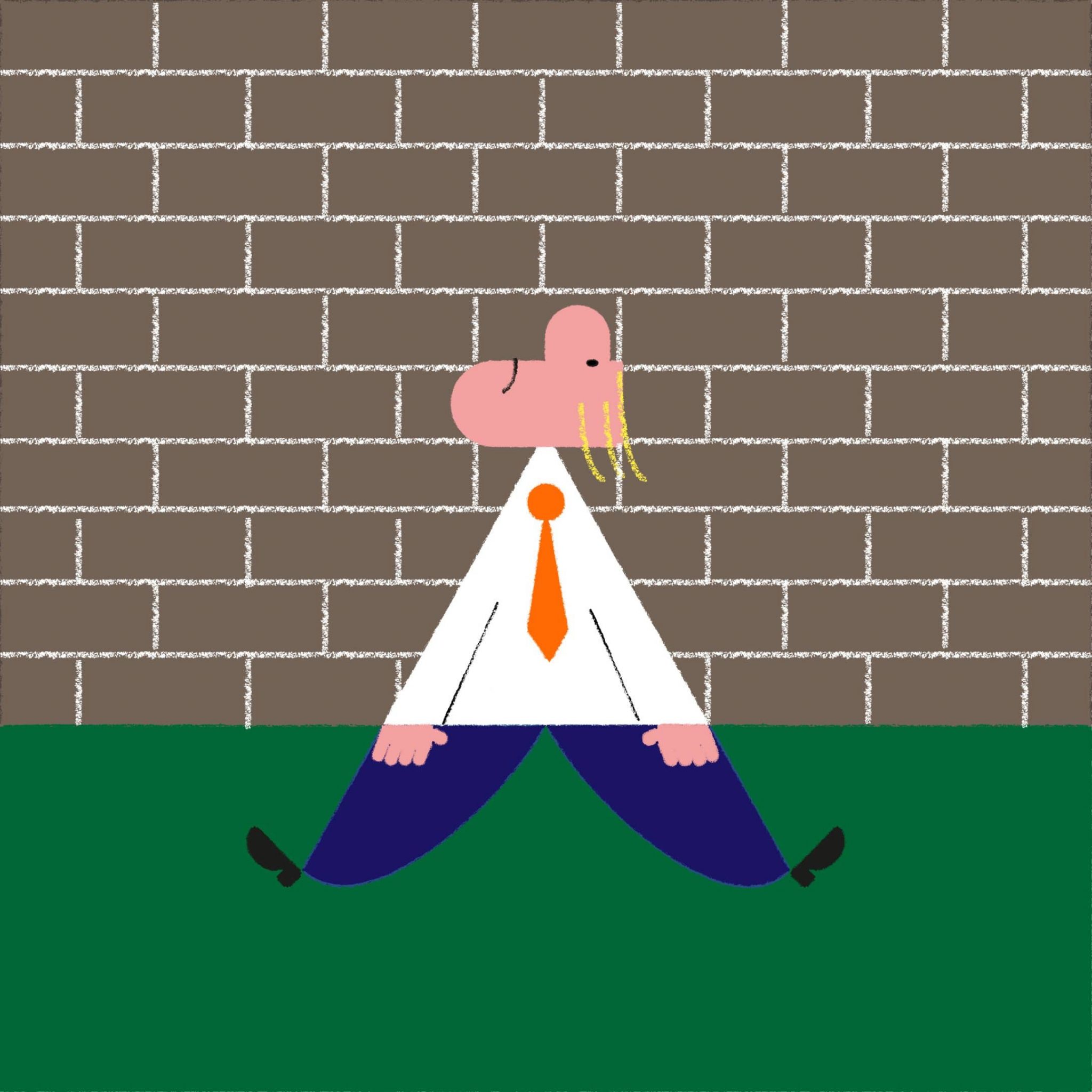
Early cover idea artwork by Jay Cover.
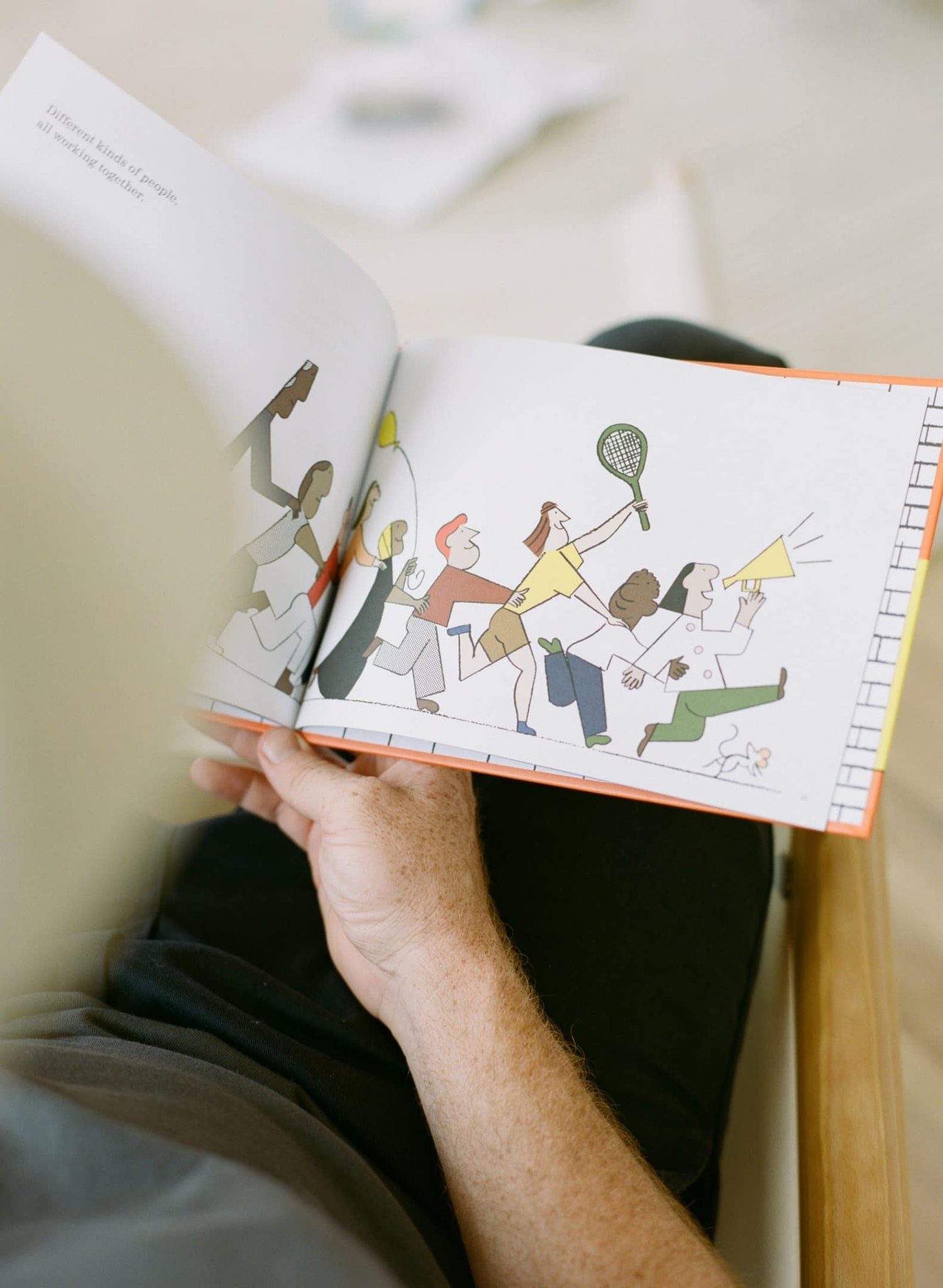
Brad Holdgrafer flipping through Walls and viewing a page where the text reads “Different kinds of people, all working together.”
Can you introduce yourself and what you do?
Brad Holdgrafer: My name is Bradley though most people call me Brad. I do a handful of things. I like to believe that helps me approach the things I do like to do in unique and interesting ways. One thing I certainly don’t do is write, but it doesn’t stop me from trying. The public’s perception of myself? I’m not sure they think of me at all!
Jay Cover: My name’s Jay and foremost I’m an illustrator, I get up most days and go straight into my home studio. I start looking at what I have for the day ahead, then clear the way, clear my emails, clean my workspace and set it up ready to get started after I’ve had my shower and breakfast smoothie. Every Tuesday I commute to London to teach at Camberwell College of Art on the BA Illustration course, where I work with talented, highly engaged students and an amazing team of educators and forward thinkers. This is usually a tough but highly rewarding day. Intermittently, but fairly regularly I’m conversing with Nic & Will, who I collaborate with as part of Nous Vous Collective on larger scale projects, more multi-facetted, occasionally more socially orientated but generally projects that require a large workload that an individual would find it hard to do.
How did you guys originally link up?
Jay: I was on the receiving end of a lovely, warm, and flattering email out of the blue from a man named Brad with a proactive project in his pocket, who seemed very concerned by the state of the country he was living in. Who informed me he wanted to do something about it and wanted me to help him out.
Brad: I had the idea for the book and wrote a draft immediately after it popped into my head. When I started looking for like-minded illustrators I came across Jay. His style is wonderful but it’s his passion for people that I really admired. You can see it in almost all of his illustrations. A human interaction of some sort, he seems to always lead with people. I don’t know if he does it on purpose, but through that I could tell he had a good heart. After the cold email I sent him, to my surprise he was down!
What’s been the most interesting or meaningful memory of one another?
Brad: What you see now as the final product is not too far off from what I first wrote when I had the idea and Jay absolutely landed the illustrations in the first pass. We just clicked.
What has also been remarkable about this book is how many walls (ironic I know) we hit in the making of it. From it completely getting no traction and only printing five. The printer making a mistake and giving us five extra for free that we then could send to press and publishers. Blindly sending copies to whomever we thought might be interested and hearing nothing in return. Eventually posting it on social media in the form of a personal project and Princeton Architectural Press noticing it on Jay’s account, writing a comment, and eventually getting an email contact. Hearing nothing again for six months with an email asking a couple questions then again nothing for a handful of months. One day … POOF there was a contract in our email. Months later a handful of international co-editions and a set release date AND we did it all without losing trust in each other or the idea. We couldn’t believe it, I still don’t believe it.
Jay: My perception of Brad generally is as this positive hammer. Like Pete Seeger’s hammer. I feel this perception has been gradually built from the moment we made contact, where Brad was concerned about the political rhetoric in America and I was similarly feeling concerned about the UK, particularly the EU referendum. This set of circumstances brought us together across the Atlantic and this means a lot to me, finding a like-minded person who wanted to do or say something about how we felt in a meaningful and pro-active way. It was great and kind of surreal that we got to go out to dinner together in London, when Brad was visiting for work. Before this we’d just been people at the other ends of emails.
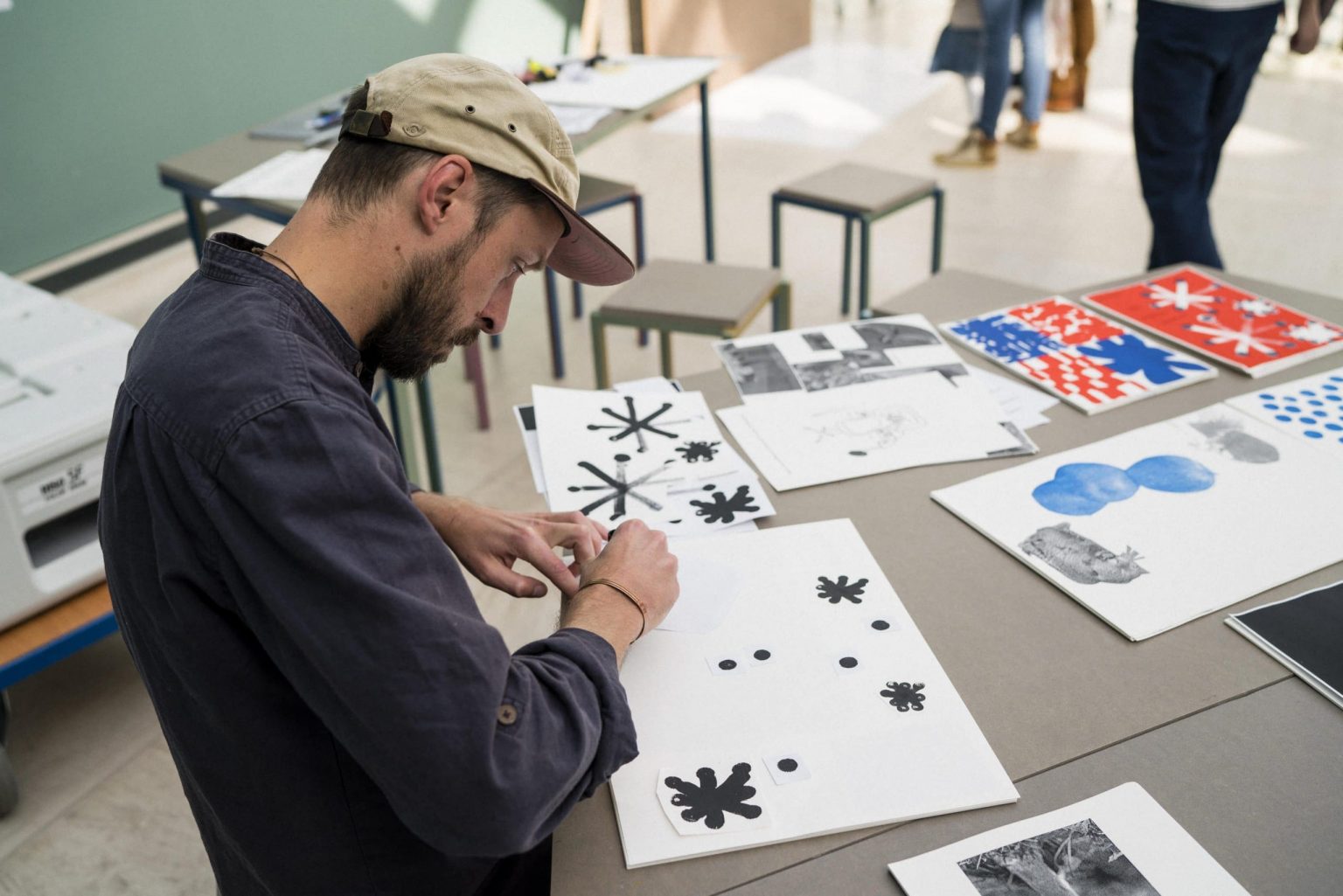
Jay Cover.
“Brad and I both believe being open in the spirit of friendship as a way of solving problems and issues, being diplomatic and fair. Exclusion in my opinion is a very bad policy, I’ve never seen it work. So when Brad contacted me I was very up for it.”
— Jay Cover on how the idea of Walls came about.
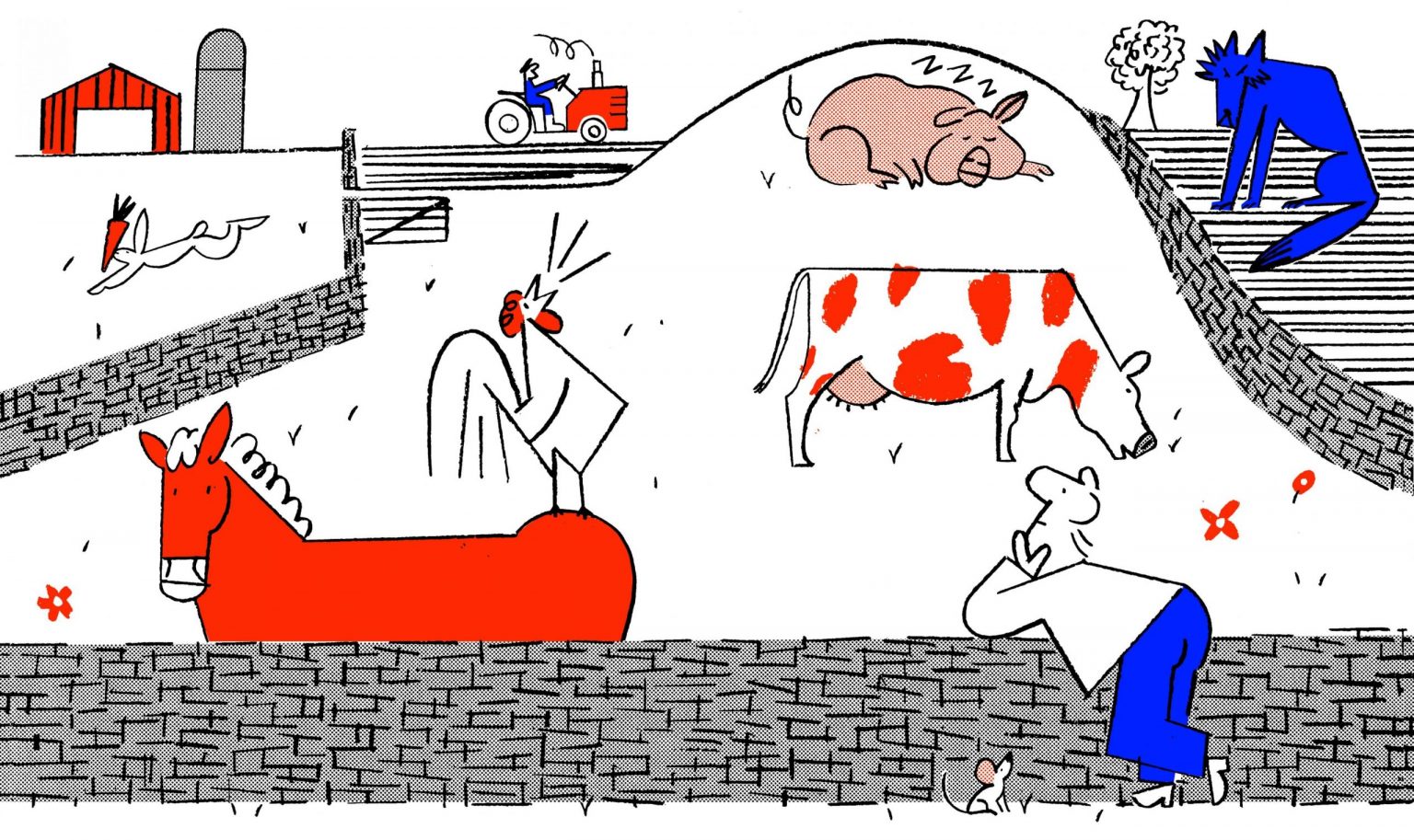
First iteration artwork by Jay Cover.
How did the idea for Walls come about?
Jay: It was Brad who contacted me with the idea and the poem he’d created in response to Donald Trump’s campaign about building a wall. I have to say I was also very dismayed about the idea; there was a lot of footage in the UK of the election campaign and seeing these ideas and this perspective being taken up by good people was very concerning. My impression was of Brad’s concern particularly toward the idea of the Wall and excluding people, it seemed to be too easy a fix, too easy an answer to a really complicated problem. And in all a fairly negative, protectionist viewpoint. Brad and I both believe being open in the spirit of friendship as a way of solving problems and issues, being diplomatic and fair. Exclusion in my opinion is a very bad policy, I’ve never seen it work. So when Brad contacted me I was very up for it.
Brad: It was the night of the RNC (Republican National Convention) actually. I was feeling discouraged by the things I was hearing on TV to the point of disbelief (obviously not the first time I was hearing it). I couldn’t get my head around the simple fact that I’m sure I’ve shared a classroom with some of these people, read the same books, watched the same shows, and had the same upbringing. These lessons of inclusivity, equality, openness, and kindness are things we learned time and time again as kids and it was completely lost. What happened and how could you possibly hold a discussion with someone like that?
The children’s book was the perfect medium. The book itself may seem like its for the left leaning audience, but it’s intentionally designed for the other side. The goal being as people read these pages to their kids they too will be reminded that they hold these values as true and these are things they want their child to know and believe too. The one reading the book should also be the one listening.
Was there a “right time” for this book to release? Or could it have been released earlier?
Brad: Every moment since it was written has felt like the right time and every moment after that feels like a better time. It may seem like the book is about a certain wall, but even if that certain wall never happened, there would still be plenty of walls worth breaking down.
Jay: If it was released earlier it would probably have better assuaged our frustration and helped us feel we were reacting in a timely way to the issues we were disturbed by. But looking back, I think the whole project was a bit of a cathartic exercise from the start — as well as being something we wanted to share with others. Brad and I would have both been happy just to get the book together and spread it as easily as we were able. When one of the spreads was seen by Simone Kaplan-Senchak, employee of Princeton Architectural Press at the time, on my Instagram feed, who then contacted me about it, the possibility opened to be something much more widespread and ambitious. And personally I feel at that moment, alleviating our grievances came second to getting the message out and that was going to be worth waiting for. We both knew the message was going to be as relevant today as it was then. I’m not sure if there is a right time necessarily — it feels like a problem that has occurred over the ages in different contexts, places and social movements. I like to think it’s fairly universal and timeless, despite the relative importance of saying it now, whilst things are in motion.
If I gave you 5 words to describe Walls to a five-year old, what would that definition be?
Jay: It’s about you and me!
Brad: Jay defined it so perfectly…
If I gave you a whole paragraph to describe Walls in a more profound socio economic and political sense (to an adult perhaps), what would that explanation look like?
Brad: The absolute best way to grow as a person comes when you surround yourself and learn alongside people who are nothing like you.
Jay: All in all I believe most people would agree that friendship and getting along with your neighbors is a much more profitable endeavor, in every way imaginable, than shutting people out, being protective and engendering a negative environment based on exclusivity.
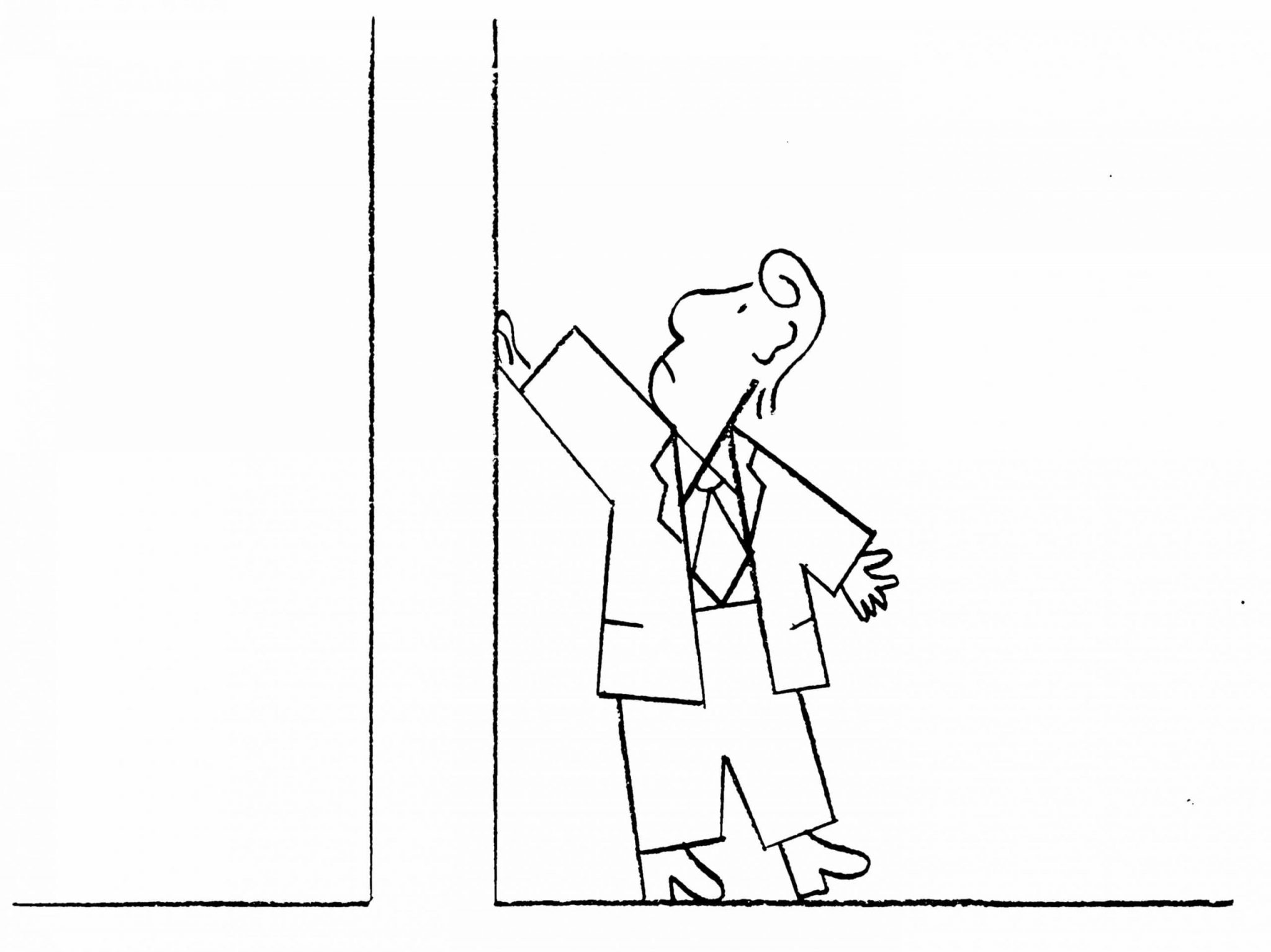
Early character sketch by Jay Cover.
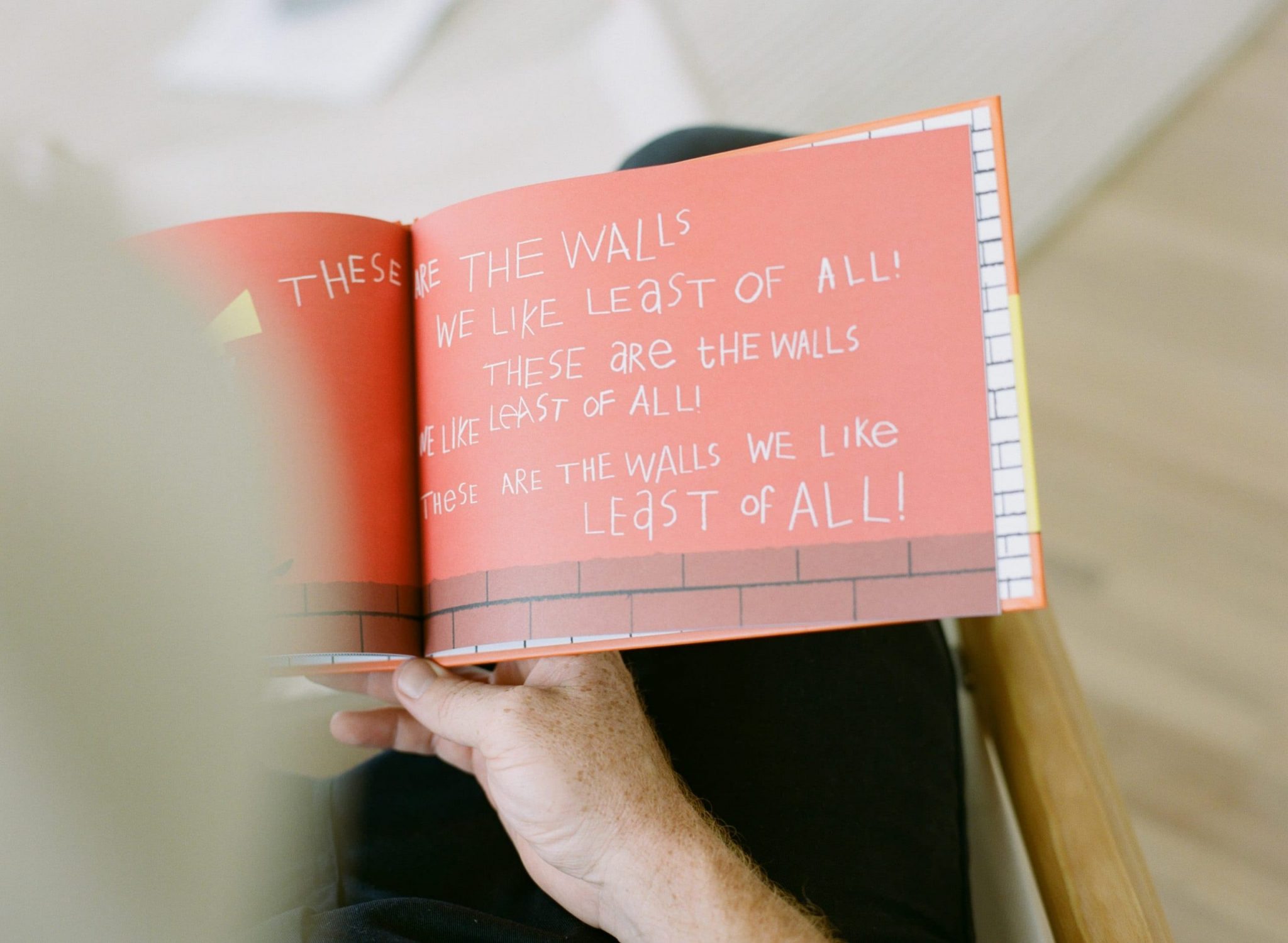
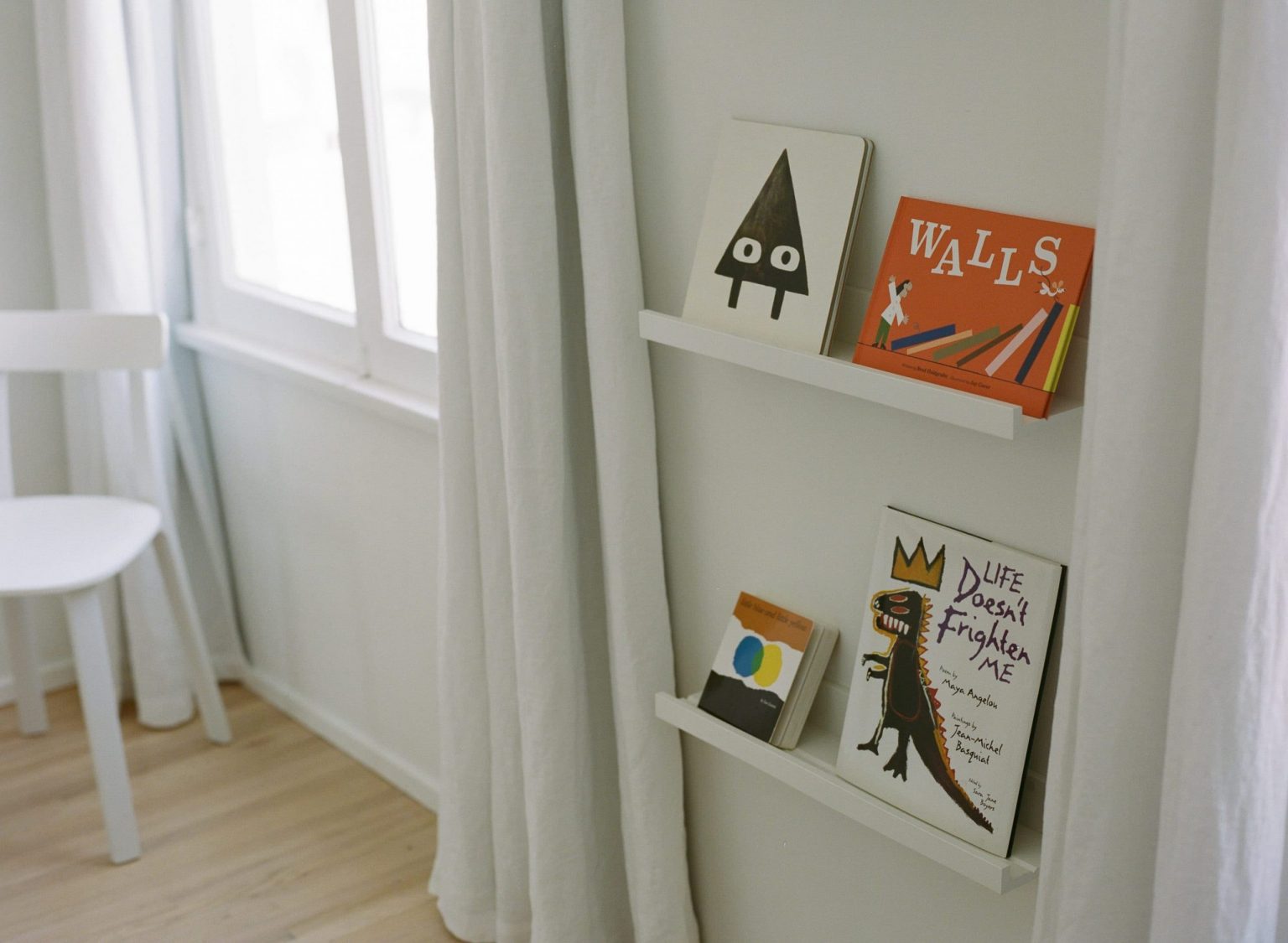
Walls in good company with Triangle by Mac Barnett and Jon Klassen, Little Blue and Little Yellow by Leo Lionni, and Life Doesn’t Frighten Me by Maya Angelou with illustrations by Jean-Michel Basquiat.
Do you believe you guys have a unique perspective on the matter at hand? Why so?
Brad: I don’t feel like we have a unique perspective on the matter at hand, just the means to make something unique out of it. This is something people suffer from every single day, it would be naive of us to think we are looking at this from angles they haven’t already considered.
Jay: I don’t think my personal perspective is unique in any way, but that’s a positive thing. Lots of people don’t have the ability to express their opinion, lots of people don’t get the privilege that perhaps myself and Brad have. With the ability to access certain streams of communication. Some people don’t have the time to nurture their thoughts into tangible things that communicate with others, and can’t express themselves through these channels. I think this is particularly the case with the vulnerable people on the short end of the stick with this issue. So it was nice to be able to use this privilege to give voice to this. I think the combination of our input, our ideas and our collaboration makes it unique in a way, I have certainly meditated more on this problem than I would have without making the pictures for the book.
Is Walls a “children’s book” in the purest sense or are we seeing a shift and broadening of what a children’s book can be?
Brad: What I’d like to think is that if we made a children’s book about walls that breaks down the walls of what a children’s book could be we’d have done something pretty neat. I also like to remind kids that I’m not a writer, so when they see that it was written by me on the front it makes them less afraid to try new things.
Jay: I personally feel this is best analyzed and considered by people who are much more qualified to talk about whether it broadens definitions or not. I wasn’t thinking about that consciously as we were making the book, it wasn’t part of the design process as far as I’m aware. For me it was much more doing what I know how to do in the way that I do it. That’s not to say I don’t have a critical perspective and understanding of kids books and storytelling. I feel I have a kind of in-built personal perspective, which has developed over a long period of time studying, but this is more bedded in and would take me a long time time explain.
How do you envision adults reacting to the book?
Jay: During the process of making the book one thing I kept thinking, and me and Brad had discussed, was about it being for adults too. I suppose the idea itself was kind of born out of people ‘acting like a child’, which is perhaps a bit mean to kids. They don’t all react emotionally and simplistically toward very complicated issues in my experience. I find them much more able to ask questions and consider things. So in a sense it’s also aimed at adults questioning their own perspectives; we want to encourage reflection, rather than just being a cautionary tale for children.
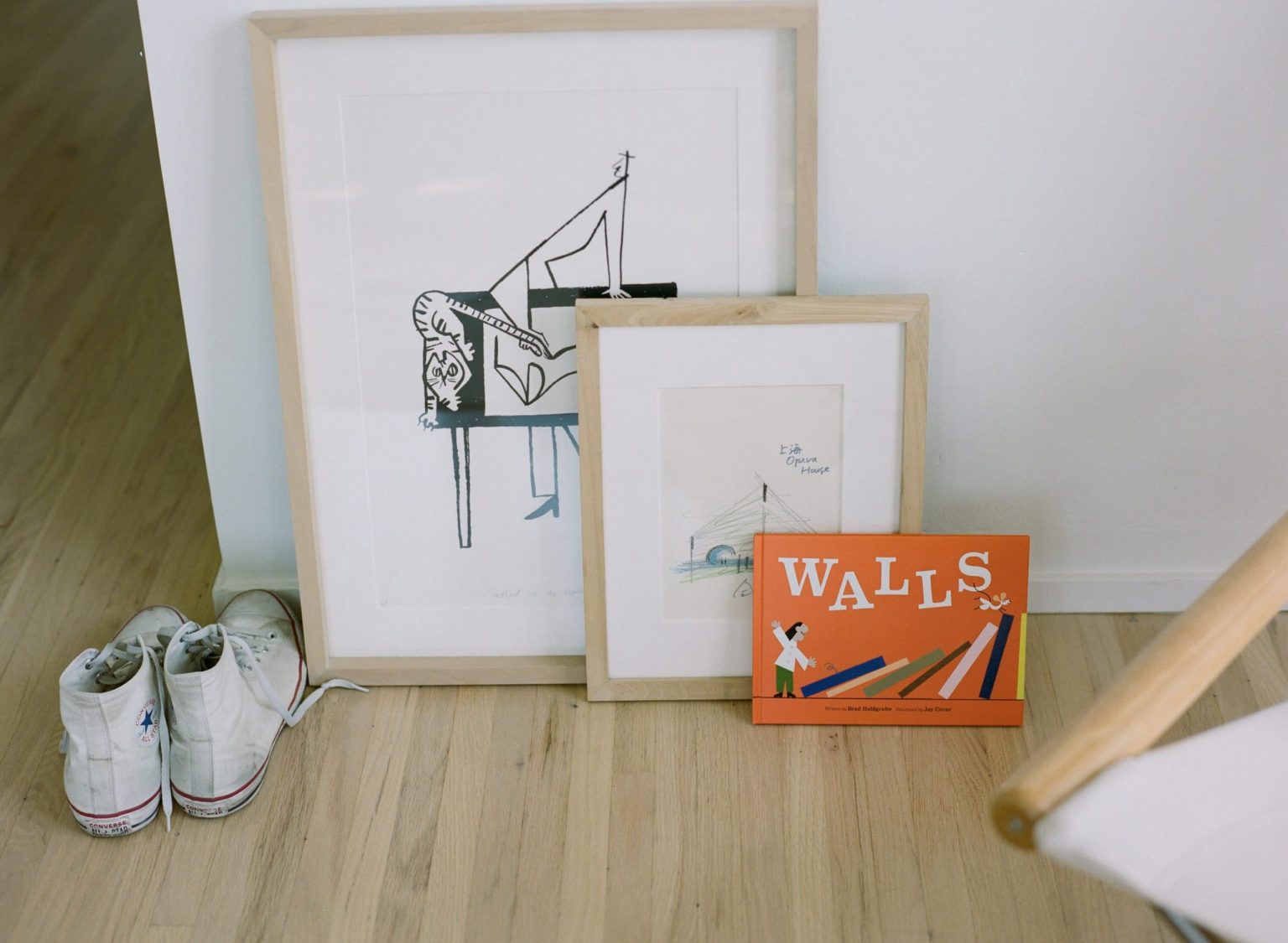
“The absolute best way to grow as a person comes when you surround yourself and learn alongside people who are nothing like you.”
— Brad Holdgrafer on what Walls is really about.
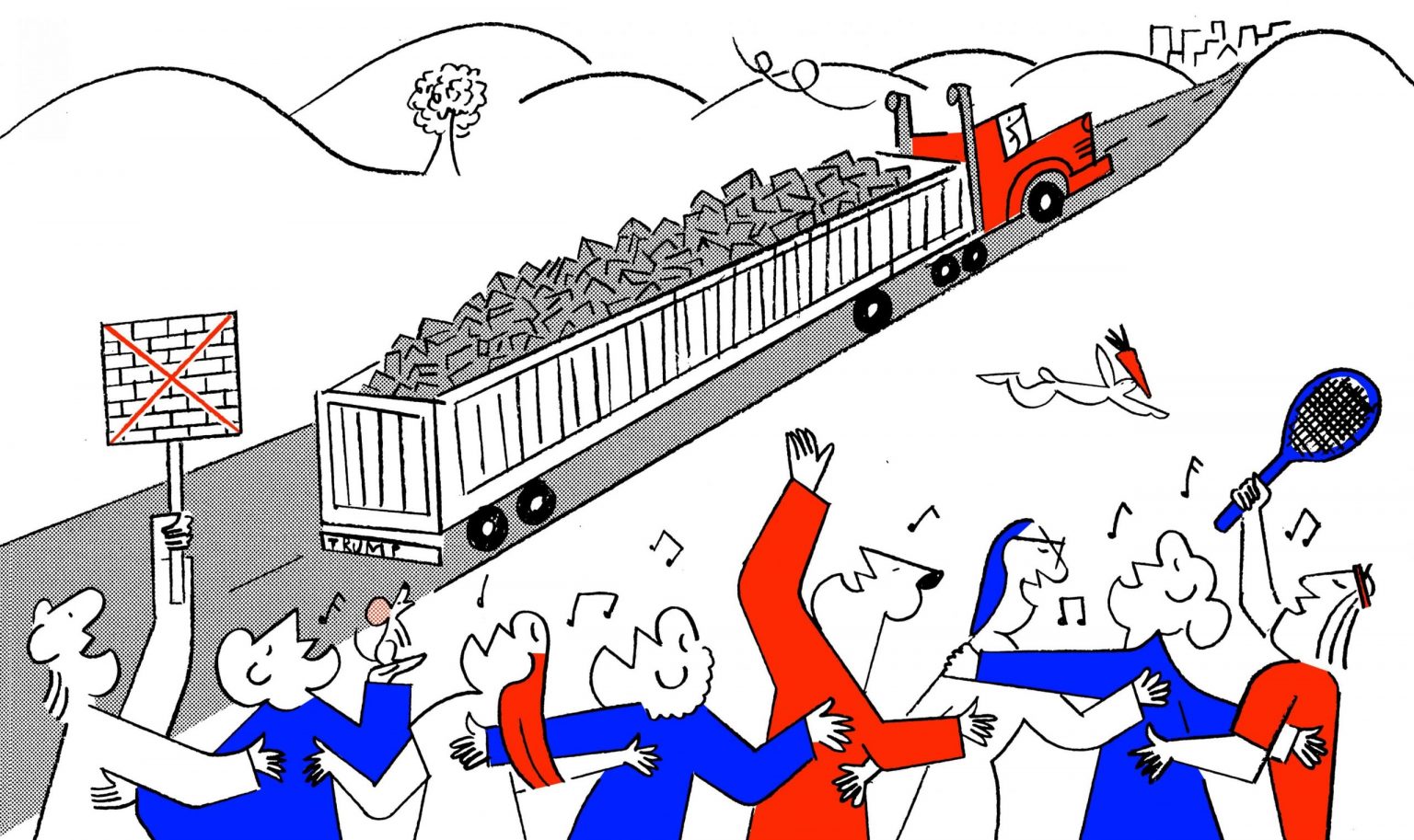
First iteration artwork by Jay Cover.
What’s considered a success with Walls and what do you think people should take away from it?
Brad: These are great questions. If a generation of kids could grow up without walls in their way, what a world it would be.
Jay: My lofty ambition is that I’d like people to go away thinking and reflecting on how to make the world a more accommodating and fair place, by creating a less exclusive environment to live in where everyone is happy. Hopefully people might end up agreeing that building a wall to solve this problem isn’t such a good idea.
As somebody who wouldn’t call himself a writer, how do you think Brad did on the writing aspect?
Jay: After re-reading the poem lots of times, I always find something new in it. It’s really clever how Brad has laid it out, initially by saying ‘these walls on the farm are no cause for alarm’, The ‘alarm’ part is a great presupposition to what’s ahead. The first page is set on a farm, a place of work which relates to economics, but also natural beauty and welfare, which I think is a great place to start. There’s lots in the book like this, relating to sport and art and domesticity. It was really fun thinking about what type of sport to illustrate, considering what type of place would be best, and how many people involved. The pacing and the situations all lend something else, so it feels quite deep in a way. But also something you can jog through and enjoy. I really hope people get that. So if anything I like to think there’s going to be something new every time you look at it without it being overly dense. I know reading books to children can be repetitive and hopefully this one won’t be.
What’s the synergy between the writing and the illustrations? For example was there a need to align?
Brad: We aligned immediately. I don’t even think we had a single edit in the first few renditions. We just got it. Jay’s illustrations could stand alone without me having to write a single word, they are just that good. He captured it perfectly.
Jay: As Brad had written the poem, for me it was a case of dissecting it and deciding how many drawings to make, what situations to illustrate and how. I thought the poem worked and flowed really well and could immediately see how it could be approached. There wasn’t much back and forth. In the studio I was making the drawings and leaving them for a day or two, as I do, then revisiting and tweaking, but that was about it. I suppose Brad maybe already spotted something in my work that related to what he was thinking and how he envisaged it, so the synthesis was there from the start.
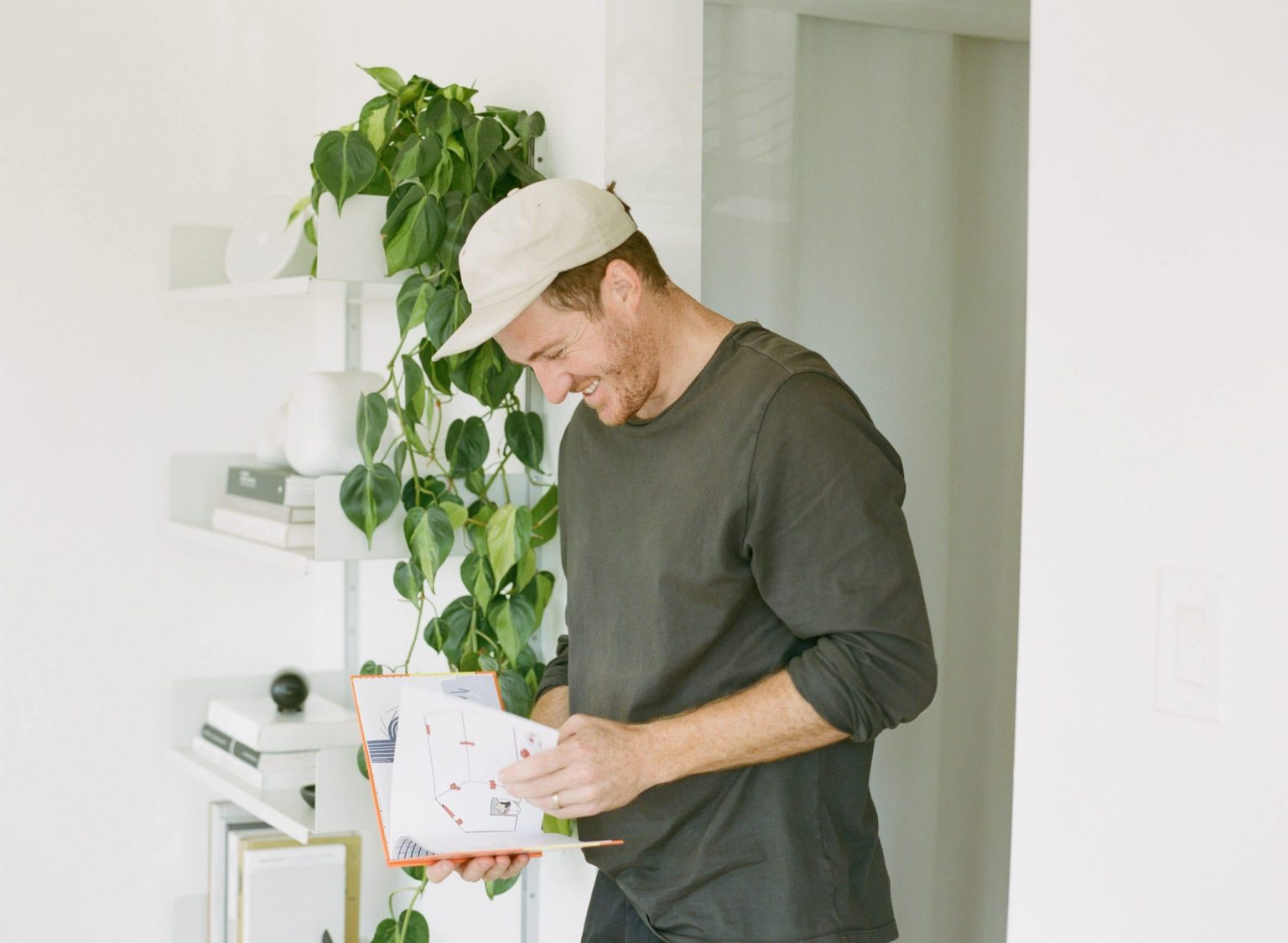
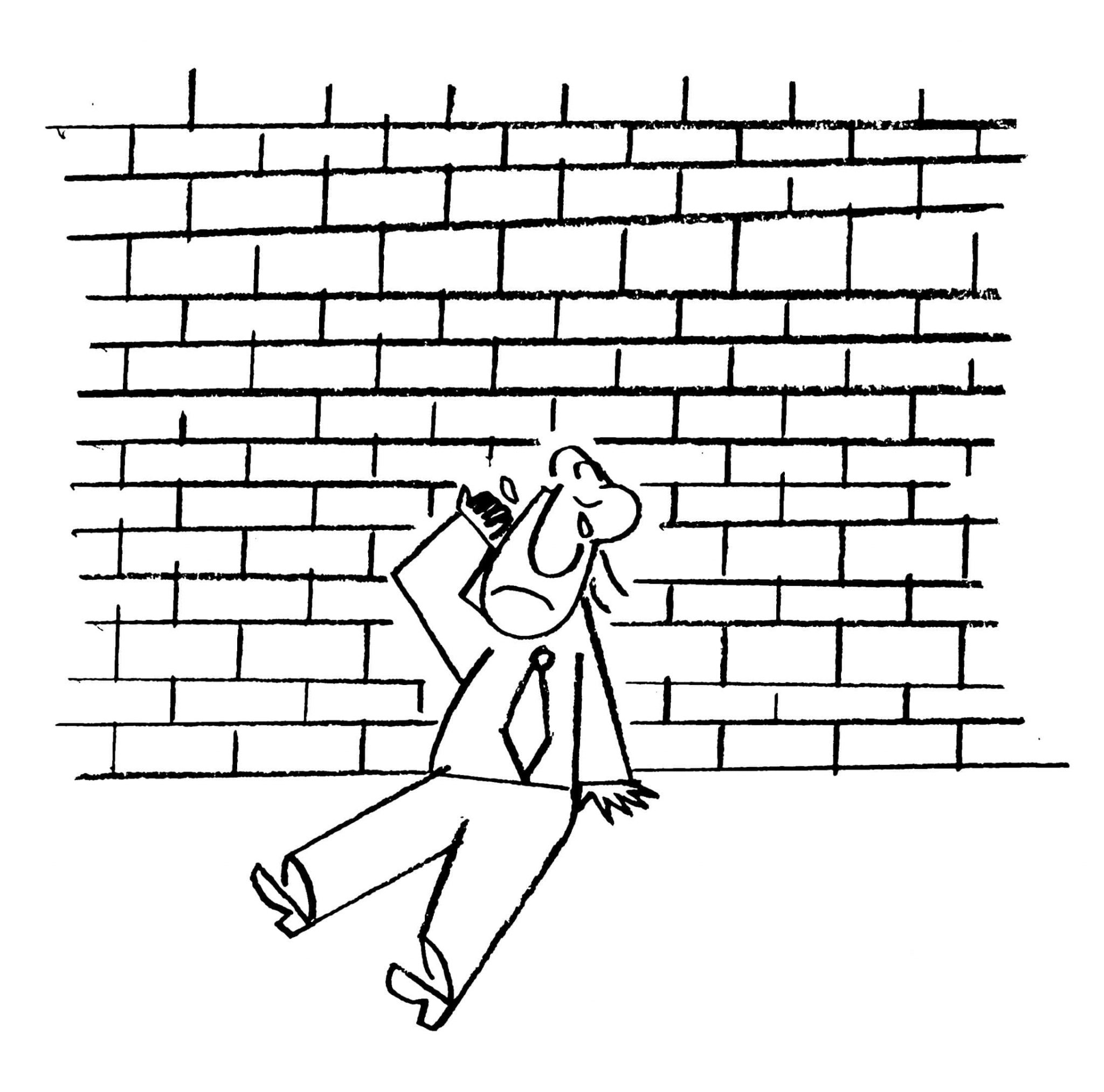
Early character sketch made by Jay Cover showing a crying Trump-esque figure.
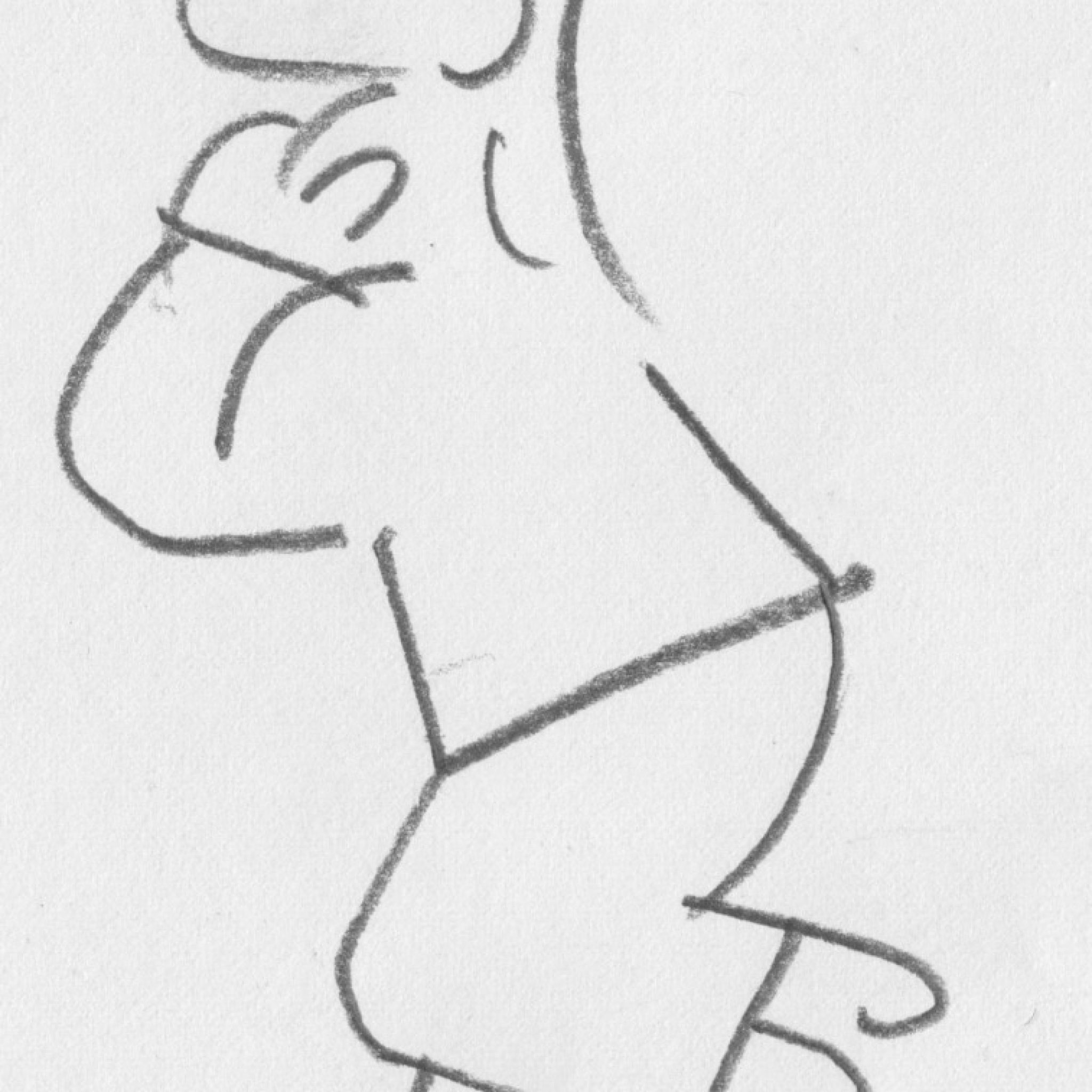
An early character sketch by Jay Cover.
Stylistically, Jay, did anything need to change and be adopted in the context of a children’s book? (My initial thought is no, but perhaps there are nuances at hand.)
Jay: Yes! Quite dramatically when we discovered it was being commissioned to go to a larger audience. The fundamental compositions stayed the same, but was necessary to change the character and make it more universal and add some colour. Which meant some sections had to be reverse engineered, but this also opened up a new way of illustrating, by using blocks of colour, which gives the book a bit of visual interest and makes the whole thing less repetitive. It gave us scope to reflect and add some more illustrations too, which really help it along and bind the message. I actually really enjoy revisiting things and tweaking them, making it better — I could probably just do that forever. Originally the character was a sort of Donald Trump caricature, as if he was youthful and inquisitive. I didn’t want to do a gross caricature that made cheap points about the way he looks or a critique of his behavior, so I made it quite nice and friendly in a way. More like he was a child discovering something and an idealized version of him, which is a slightly patronizing and odd criticism in itself, I’m aware. But it was nice to change it and make it even less about this and more about the message itself.
What did you think it’d be like to do a children’s book and what was the reality?
Brad: It takes so much longer than I thought. We finished the first edition of the book in August 2016. Almost exactly two years later it’s coming out. It took the long way home. It felt like any passion project with friends. Just make it as good as you can with what you have and be grateful if it becomes anything more than that.
Jay: I’ve done a couple of children’s books in different ways before, either by authoring my own or just being an illustrator. This one felt much more like a collaboration and about something we both really cared about. Sometimes it’s difficult to transform ideas that are so direct and from the heart into a book, a piece of communication without it being mixed up and you losing faith in your opinion or not feeling like you should be the one saying something. But this really chimed with me and through our collaboration it gave me license to express my opinion. Without being afraid. I’ve never had anything commissioned in this way before, by making something then it being picked up, it was really refreshing that PAP were so brave to do this. I find this quite rare and lots of publishers seem to play it safe. So it’s been a real learning curve, I’d say it took a lot longer than I thought it would, but has been has also been a lot easier than I thought it would be in many ways.
